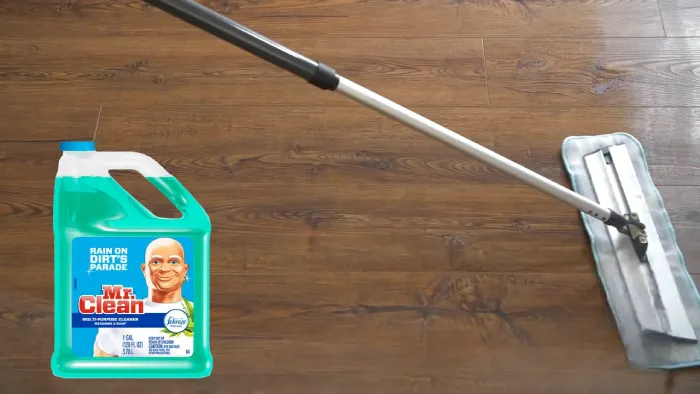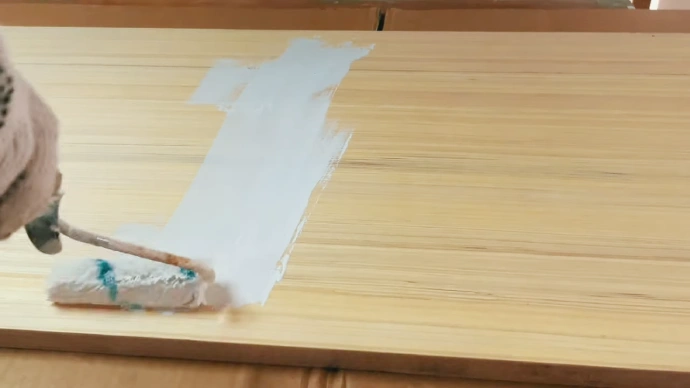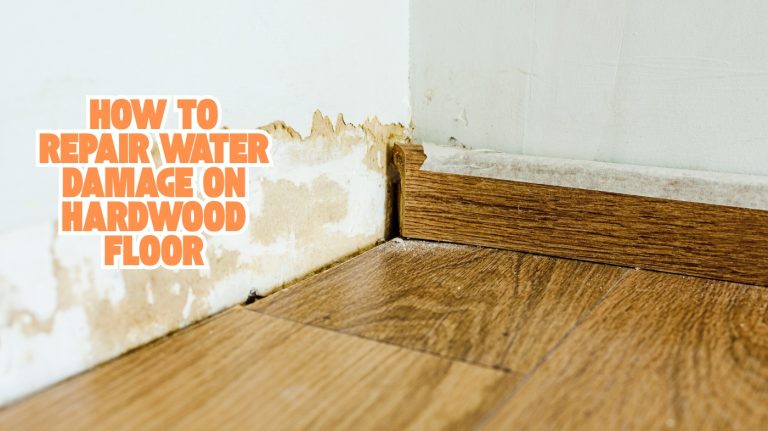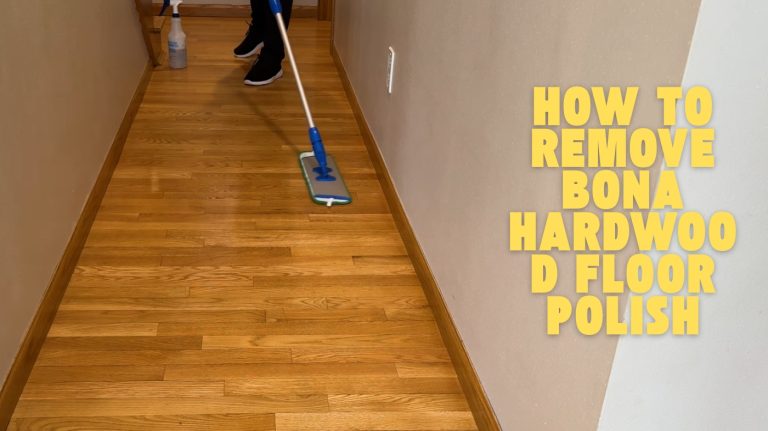Can You Steam Clean Engineered Hardwood Floors: Unveiling the Truth
Engineered hardwood floors are an investment that adds value and charm to any home. Maintaining their beauty and durability is key, but cleaning can be confusing. Steam cleaning, in particular, is often a source of concern for owners of these floors.
While using steam to eliminate dirt, stains, and germs is appealing, exercising caution is important. Using steam on engineered hardwood floors without proper precautions can lead to severe damage that affects their appearance and structural integrity.
Cracking, warping, and delamination are common risks that can ruin your investment quickly.
Therefore, discover the essential cleaning strategies for engineered hardwood floors to keep them pristine. Unlock the secrets of steam cleaning for optimal results. Keep reading for more.
How To Use A Steam Cleaner On Engineered Hardwood Floors?
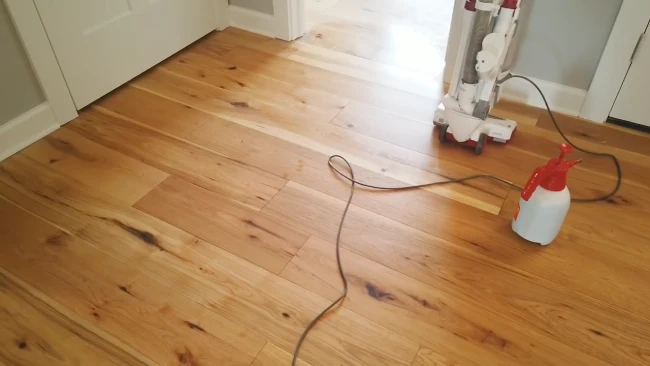
While experts don’t typically recommend steam cleaning for engineered hardwood floors, sometimes it’s unavoidable. With our best techniques for optimal results, you won’t have to worry:
Step 1: Preparing The Floor
Preparation is key to ensuring effective and safe steam cleaning of engineered hardwood floors.
The first step in preparing the floor for steam cleaning is to remove any loose dirt or debris with a broom or vacuum cleaner. This will prevent scratches caused by rubbing particles against the surface during the steaming process.
Step 2: Cleaning The Floor
After preparing the engineered hardwood floor for steam cleaning, it is time to move on to the actual cleaning process.
When using a steam cleaner, it is essential to follow manufacturer instructions carefully and adjust the settings accordingly. It is also recommended to start with a low-temperature setting and gradually increase as needed.
Work in small sections at a time to ensure that each section receives adequate attention. The steam mop should be moved slowly across the surface of the flooring, allowing sufficient time for the heat and moisture to penetrate into any crevices or grooves in the wood.
It is worth noting that while steam cleaning can effectively remove dirt and grime from engineered hardwood floors, it may not be suitable for all types of finishes. Check with your flooring manufacturer or a flooring expert if you’re not sure whether steam cleaning is right for your engineered hardwood flooring finish.
Step 3: Drying The Floor
After steam cleaning the engineered hardwood floor, it is important to allow sufficient time for drying. Drying helps prevent any moisture from seeping into seams or between planks and causing damage to the flooring.
To dry the floor after steam cleaning, use a clean microfiber cloth or mop to absorb any excess water the steam cleaner leaves. It is essential not to let standing water remain on the surface of the flooring as this can cause warping, cupping, or other forms of damage.
For faster drying times, open windows or turn on fans in the room where you have cleaned your floor with a steam cleaner. This will increase air circulation and help evaporate remaining moisture more quickly.
Remember that proper drying ensures a longer lifespan for your engineered hardwood floors and prevents costly repairs down the line.
Risks Of Steam Cleaning Engineered Hardwood Floors
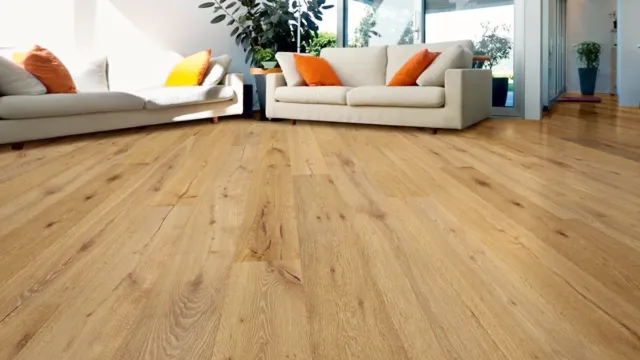
While most people think steam cleaning may seem like a great way to keep your floors clean and polished, there are potential hazards you should know about. Here are a few:
1. Risk Of Moisture Damage
Though steam cleaning is a popular option for cleaning engineered hardwood, there are risks involved. The most significant being moisture damage. Find out more about these risks before you decide to take the plunge.
Steam cleaners use high-pressure hot water vapor penetrating deep into the wood fibers and remove dirt and grime.
While this may sound effective, excessive moisture exposure can cause irreversible damage to the floorboards. If water seeps through the surface layer of the engineered hardwood planks and reaches the underlying layers, it can lead to warping, swelling, or buckling.
The risk of moisture damage increases if the engineered hardwood floor has gaps or cracks in between individual planks.
Risk Of Warping
Another risk associated with steam cleaning engineered hardwood floors is the potential for warping. The high moisture and heat levels can cause the wood to expand and contract, leading to a warped appearance.
This phenomenon occurs when the humidity level in the room increases, causing the floorboards to absorb excess moisture.
Warping not only detracts from the aesthetic appeal of your flooring, but it can also compromise its structural integrity. Warped boards can create gaps between planks, making them more vulnerable to damage or breakage over time. It may require costly repairs or even replacement if left untreated.
3. Risk Of Discoloration
Steam cleaning can also cause discoloration in engineered hardwood floors. The heat and moisture produced by steam cleaners can penetrate the wood fibers and react with the floor’s protective finish, resulting in a darker or lighter shade than the original color.
Additionally, repeated exposure to steam may cause some floor areas to turning black, dull or fade. These changes in the wood’s appearance are irreversible, so following directions carefully when steam cleaning your engineered hardwood floors is important.
How to Choose The Right Steam Cleaner?
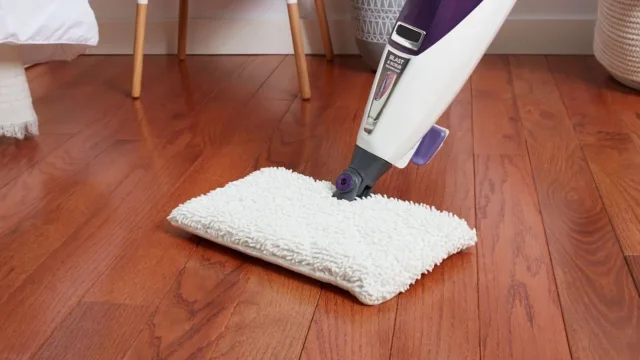
One key factor when choosing a steam cleaner is its temperature and pressure settings. The ideal steam cleaner should have adjustable settings to control both temperature and pressure levels.
This way, you can adjust the heat and force based on your specific floor’s needs.
Another important consideration is the type of mop head or attachment used with the steam cleaner. For engineered hardwood floors, it is recommended to use a soft microfiber cloth or pad that can gently clean without scratching or damaging the surface.
Avoid using harsh chemicals in conjunction with your steam cleaning process, as they may cause discoloration or other damage.
How To Select The Right Steam Cleaner Temperature?
After determining the right steam cleaner for your needs, it is essential to consider the appropriate temperature setting. The correct temperature will ensure that you do not damage your engineered hardwood floors and provide a thorough cleaning without leaving water marks or causing warping.
It is crucial to read the manufacturer’s instructions carefully, as some brands may recommend specific temperatures based on their construction.
Before using any steam cleaner, test its effectiveness in an inconspicuous area of your flooring to check for any adverse reactions such as discoloration or damage. Once satisfied with the results, adjust the temperature accordingly.
Also, when setting up your steam cleaner, ensure all windows and doors are open to allow proper ventilation during use. This will prevent heat from accumulating and creating excess moisture, which can cause long-term problems like mold growth.
What to avoid when cleaning engineered hardwood?
Understanding what to avoid when cleaning your engineered wood flooring is crucial to ensure it stays in top condition. Avoid using wax-based cleaners on your flooring, as the build-up will accumulate over time and leave an unsightly residue on the surface.
Also, oil soaps should be avoided as they can cause damage to your hardwood flooring by leaving a dull or hazy finish. In addition, refrain from using steel wool while cleaning your engineered hardwood, as this can scratch its surface and damage the protective layer.
As such, it is best to stick to appropriate cleaning products and techniques that will leave your flooring looking clean and polished for years to come.
Does vinegar hurt engineered hardwood floors?
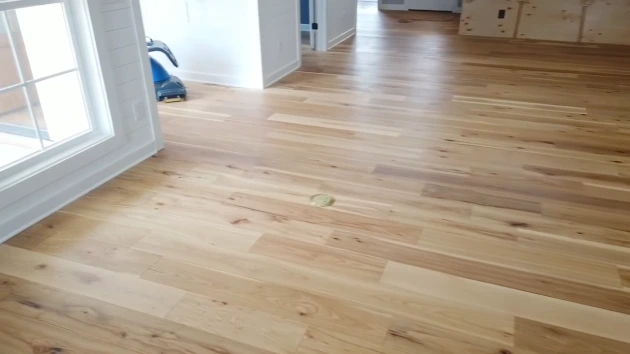
It is important to avoid using cleaning products that contain vinegar on engineered hardwood flooring. This is due to the acidic nature of vinegar, which can potentially cause damage to the veneer surface on the upper layer of the hardwood.
Using soap-based cleaners or wax can also erode or damage the finish of the flooring, as we mentioned above. To maintain the integrity and longevity of the engineered hardwood flooring, it is recommended to use specialized cleaning solutions that are specifically designed for this type of flooring.
Note: Just follow these simple cleaning and maintenance guidelines from the manufacturer. A stunning floor can last for years using the right products and methods.
Efficiently Steam Clean With Caution to Prevent Damage
If you own engineered hardwood floors, you must know proper cleaning techniques to keep them looking their best. Steam cleaning, while an efficient and time-saving method, but using wrong can cause irreversible damage to the surface due to the moisture penetrating the wood fibers.
To avoid this, it’s recommended to sweep or vacuum regularly to keep dirt and debris from accumulating. A damp (not wet) microfiber mop and a mild cleaning solution, such as a pH-neutral or hardwood floor cleaner, can be used for deeper cleaning.
It’s also essential to wipe up spills and stains immediately to prevent them from setting in. Besides, following the manufacturer’s guidelines for maintenance, such as avoiding heavy furniture and wearing high heels, is crucial to prevent any dents or scratches.
With these easy steps, achieve lasting beauty and functionality for your engineered hardwood floors.



